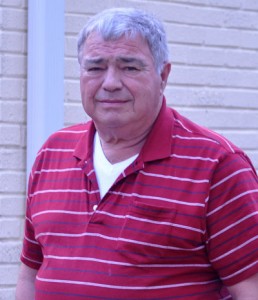New faces fill The Avenues in Cayce, W. Columbia
by Reporting Students • April 1, 2015 • All Stories, Neighborhoods • 2 Comments
There are a lot of new faces in The Avenues – the neighborhood of tidy homes that blossomed after World War II but struggled in recent years. One expert says its proximity to the University of South Carolina, just across the Congaree River, has a lot to do with the revival.
By: Antoine Thomas
April 1, 2015
In her 70 years living in The Avenues, Ann Diamond has seen a lot of change in the Cayce-West Columbia neighborhood that became home for many GIs returning from World War II and their families.
Ann Diamond, 81, who has lived in The Avenues for 70 years says she misses the sound of children. But young families are moving back into the neighborhood that spans Cayce and West Columbia. Read more about Diamond.
Her neighbors have aged. Their children have grown and moved away. Diamond, now 81, still watches as her neighbors circle the block for their daily exercise but says she misses the children playing outside.
“When my children were coming along, there was kids playing everywhere. I always had a house full of kids,” Diamond said.
Those sights and sounds are returning. With Columbia’s attractions just over the Congaree River and new development on the Lexington County side, young adults like 31-year-old Adam Kays are rediscovering The Avenues.
Kays, who moved into a three-bedroom, 1,800-square-foot home on Karlaney Avenue just before Christmas, had lived on Sunnyside Drive in Cayce. But he said he moved to The Avenues to save gas.
“It’s a lot nicer being close to town than having a 30-minute drive to the closest grocery store,” Kays said. “If it’s a nice day, you can go and walk to the baseball stadium” across the river at the edge of the University of South Carolina campus.

Adam Kays, 31, who recently moved to The Avenues, says it’s where he wanted to be all along because of its convenience. Read more about Kays.
Bounded roughly by State Street on the east, Charleston Highway on the west, Meeting Street on the north and Poplar Street on the south, The Avenues blossomed around the early 1940s as troops returned from the war.
Many builders like the father of Cayce Historical Museum Director Leo Redmond, quickly put up small three- or four-bedroom homes. Redmond said one of the first his father built sold for less than $4,000.
Adjusted for inflation, that’s roughly $63,300 today. Similar homes in The Avenues now sell for $140,000 to $160,000.
The Avenues’ streets went alphabetically from Augusta to Poplar, but old-timers like Diamond started using just their first letter. The shorthand stuck, and most continue to be known by a single letter.
Some, like L Avenue – for Lafayette – were confused with other names, however, so people have gone back to using the original names for those streets, she said.
In the 2000 census, about 17 percent of the neighborhood’s population was 65 or older. By 2010, that had dropped to roughly 14 percent. Meanwhile, the proportion of young adults 20 to 34 rose 6 percentage points to 29 percent.
Links
|
Ann Keating, a history professor at North Central College in Illinois who specializes in urban and suburban studies, says many neighborhoods like The Avenues are reviving as businesses are attracted to be close to universities. The Avenues remains primarily residential, but not too far away Amazon has built a distribution center and generic drug maker Nephron Pharmaceuticals has built a major plant.
“Companies locate their companies to where college students want to live,” Keating said. And small cities like Cayce and West Columbia are easier to manage and “have restaurants, small events and amenities that companies are looking for, for their workers.”
Cassidy Smith, an exercise science major at USC, said she and her roommates chose to rent in the neighborhood because “it’s really close to campus and The Avenues is one of the places we heard was a lot safer than a lot of other places.”
In recent years, several apartment developments aimed at USC students have been built on the edge of The Avenues along the Congaree. Diamond said college students have rented near her and “they’re just as nice as they can be.”
Ann Malpass, who has lived in the 700 block of Karlaney Avenue, just behind Brookland-Cayce High School, for nearly half a century, likes the new blood, but also worries The Avenues could lose its heritage of single-family homes.

Russell Long put about $100,000 into rehabbing his Avenues house but says the neighborhood will return the value.
“A community will die if you don’t attract young adults who can be leaders,” Malpass said. But, she added, “What I don’t want to happen to The Avenues is that it all turns into rental houses.”
It’s not just young people. The Avenues also is attracting Baby Boomers looking to retire there.
“The dynamics of The Avenues, it is a good place to put your money,” said Russell O. Long, who bought his 2,480-square foot, four-bedroom house in the 900 block of Karlaney Avenue in December 2013.
The house was a reminder of The Avenues’ troubles – it was so run down Long and his family wasn’t able to move in until last May.
Long, 69, estimated he spent $100,000 fixing it up. Still, he said, it was a good investment. And he predicts The Avenues will continue to be one for others who move in.

Pingback: Lifelong Avenues resident looks to new generation to revive neighborhood | Lia Grabowski
Pingback: Lifelong Avenues resident puts faith in new generation to revive the neighborhood | Columbia Voice